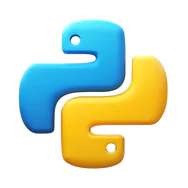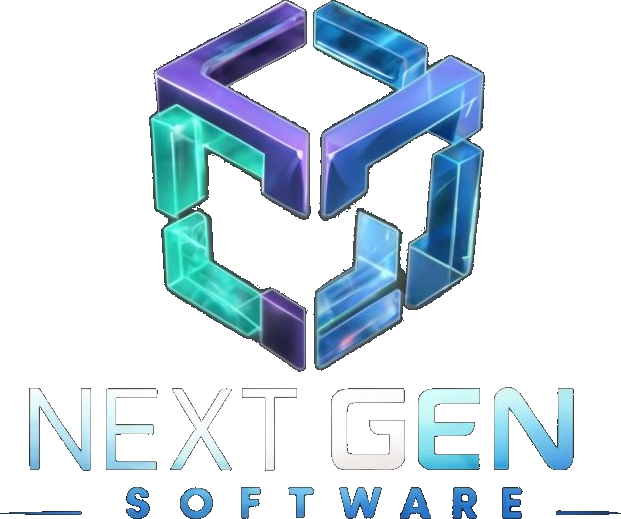Introduction

Python APK for pc is a versatile and powerful programming language that’s become a cornerstone in the tech industry. Its simplicity and readability make it an excellent choice for beginners, while its vast library of modules allows seasoned developers to build complex applications efficiently. But what if you’re a Mac user and want to explore Python APK for PC? In this article, we’ll delve into everything you need to know about running Python software on your Mac, focusing on the keyword “python apk for pc.”
Table of Contents
Understanding Python APK for PC
Definition of APK
APK stands for Android Package Kit, a file format used to distribute and install applications on Android devices. However, you might wonder how this relates to Python and PCs. Essentially, the idea is to package Python software in a way that’s portable and easy to install, much like an APK file on an Android device.
Is APK Compatible with Mac?
APK files are natively designed for Android, not Mac. However, with the right tools and knowledge, you can run these packages on your Mac. This involves using emulators or converting APK files into a format compatible with macOS.
Why Use Python APK on PC?
Using Python APK on your Mac allows you to leverage Android-specific Python applications or utilities that might not have a direct Mac counterpart. This opens up a range of possibilities for development and testing.
Downloading Python apk for pc
Official Python Website
The best place to download Python is from the official Python website (python.org). This ensures you get the latest stable release, free from malware and fully supported.
Choosing the Right Version
Python has two major versions: Python 2 and Python 3. For most purposes. For most purposes, Python 3 is recommended due to its newer features and better support.
Step-by-Step Download Guide
- Visit python.org.
- Navigate to the Downloads section.
- Select macOS and choose the appropriate version.
- Click the download link and wait for the file to download.
Installing Python on Mac

Pre-Installation Requirements
Before you install Python apk for pc , ensure your macOS is updated to the latest version. You’ll also need a stable internet connection and sufficient disk space.
Installation Process
- Open the downloaded Python installer.
- Follow the on-screen instructions, agreeing to the terms and selecting installation preferences.
- Click the Finish button to complete the installation process.
Verifying the Installation
Open Terminal and type python3 --version. If Python is installed correctly, the version number will be displayed.
Setting Up Python Environment on Mac
Using Terminal
Terminal is your command-line interface on Mac. It’s where you’ll run most Python commands and scripts. Open Terminal from the Applications folder or use Spotlight Search.
Installing IDEs (Integrated Development Environments)
IDEs make coding in Python more accessible and efficient. Some popular choices for Mac include PyCharm, Visual Studio Code, and Sublime Text.
Setting Up Virtual Environments
Virtual environments allow you to manage dependencies for different projects without conflicts. Use the command python3 -m venv myenv to create a virtual environment and source myenv/bin/activate to activate it.
Top Python IDEs for Mac
PyCharm
PyCharm is a powerful IDE with features like code analysis, graphical debugger, and integrated unit tester. It’s great for large projects and professional development.
Visual Studio Code
Visual Studio Code is a lightweight yet robust editor that supports Python through extensions. It’s very customisable and completely free to use.
Sublime Text
Sublime Text is recognized for its speed and simplicity. It’s perfect for those who prefer a minimalist setup but still need powerful features.
Jupyter Notebook
Jupyter Notebook is ideal for data science and interactive computing. It lets you create and share documents with live code, mathematics, graphics, and narrative prose.
Running Python Scripts on Mac
Writing Your First Python Script
Open your IDE or a text editor, write a simple Python script (e.g., print("Hello, World!")), and save it with the.py extension.
Executing Scripts via Terminal
Navigate to your script’s directory in Terminal and run python3 scriptname.py. Your script will execute, and you’ll see the output in Terminal.
Troubleshooting Common Issues
If you encounter issues, check for common problems like incorrect file paths or missing modules. Use error messages to guide your troubleshooting process.
Come to our website and download More Free and Secure software- Click Here
Using Python APK for PC on Mac
Converting APK to Work on Mac
To use an APK on Mac, you’ll need to convert it to a compatible format. Tools like APKPure or Bluestacks can help with this process.
Tools and Emulators for Running APKs
Emulators such as Bluestacks or NoxPlayer allow you to run Android applications, including Python APKs, on your Mac. Install the emulator, load the APK, and you’re good to go.
Practical Applications and Use Cases
Running Python APKs on Mac can be beneficial for testing Android applications, using mobile-specific Python tools, or exploring cross-platform development.
Benefits of Using Python on Mac
Performance and Speed
Python performs exceptionally well on Mac due to its efficient handling of resources and optimized macOS architecture.
Development Efficiency
The combination of Python’s simplicity and Mac’s robust performance makes for a highly efficient development environment.
Cross-Platform Compatibility
Python code written on a Mac can run on other operating systems with little to no modification, enhancing portability and collaboration.
Common Challenges and Solutions
Compatibility Issues

Sometimes, certain Python packages may not be fully compatible with macOS. Using virtual environments and package managers like Homebrew can mitigate these issues.
Installation Errors
If you face installation errors, ensure you’re using the latest Python version and check compatibility with your macOS version. Online forums and documentation are great resources for troubleshooting.
Performance Optimization
To optimize Python performance on Mac, regularly update your software, manage your virtual environments, and use performance profiling tools to identify bottlenecks.
Best Practices for Python Development on Mac
Code Style Guidelines
Follow the PEP 8 style guide for Python code to ensure your code is readable and maintainable. Use tools like pylint or flake8 to check your code’s adherence to these guidelines.
Testing and Debugging
Create unit tests for your code using frameworks such as unittest or pytest.. Debugging tools in IDEs like PyCharm or Visual Studio Code can help you step through your code and find issues.
Documentation and Version Control
Document your code using comments and docstrings. Use version control systems like Git to manage changes in your codebase and collaborate with others.
Leveraging Python for Machine Learning on Mac
Introduction to Machine Learning with Python
Python APK for PC has become the go-to language for machine learning due to its simplicity and the robustness of its libraries. On a Mac, you can utilize these tools to develop powerful machine learning models.
Key Libraries for Machine Learning
Several Python libraries are essential for machine learning:
- Scikit-Learn: Ideal for beginners, it offers simple and efficient tools for data analysis and modeling.
- TensorFlow: Developed by Google, this library is widely used for deep learning applications.
- Keras: A high-level neural networks API, it’s user-friendly and works seamlessly with TensorFlow.
- PyTorch: Preferred for research, PyTorch provides flexibility and speed, especially for developing neural networks.
Future of Python on Mac
Upcoming Features and Updates
Python is continuously evolving, with new features and improvements being added regularly. Keep an eye on the Python Enhancement Proposals (PEPs) to stay informed about upcoming changes.
Trends in Python Development
Trends like machine learning, data science, and web development continue to drive Python’s popularity. Stay updated with the latest tools and libraries in these areas.
Mac-Specific Enhancements
Apple’s hardware and software advancements can influence Python development. For instance, Apple’s M1 chip has shown significant performance improvements for Python applications.
Conclusion
Python APK for PC is a sophisticated and versatile programming language, well-suited for Mac users. Whether you’re developing for the web, data science, or automation, Python provides the tools and libraries you need. Understanding how to use Python APK for PC on your Mac can expand your development capabilities and open new possibilities. Follow the best practices, stay updated with the latest trends, and leverage the vibrant Python community to maximize your potential.
FAQs
How do I install Python APK on mac?
To install Python on a Mac, visit the official Python website (python.org), download the appropriate version for macOS, and follow the installation instructions provided. Verify the installation by opening Terminal and typing python3 --version.
Can I use Python APK on mac?
While APK files are designed for Android, you can use emulators like Bluestacks or NoxPlayer to run Python APKs on your Mac. These tools simulate an Android environment on your macOS.
What are the best Python IDEs for Mac?
Some of the best Python IDEs for Mac include PyCharm, Visual Studio Code, Sublime Text, and Jupyter Notebook. Each offers unique features that cater to different development needs.
How do I troubleshoot Python installation issues on Mac?
If you encounter installation issues, ensure you’re using the latest Python version compatible with your macOS. Check online forums and documentation for common errors and solutions. Virtual environments and package managers like Homebrew can also help resolve compatibility issues.
Is Python on Mac different from Python on Windows?
The core Python language is the same on both Mac and Windows. However, some libraries and tools might have platform-specific differences. Mac’s Unix-based system offers a robust environment for Python development, often preferred by developers.
